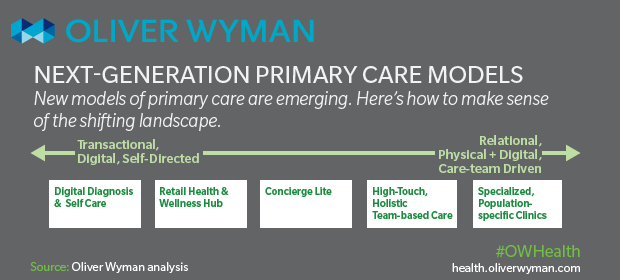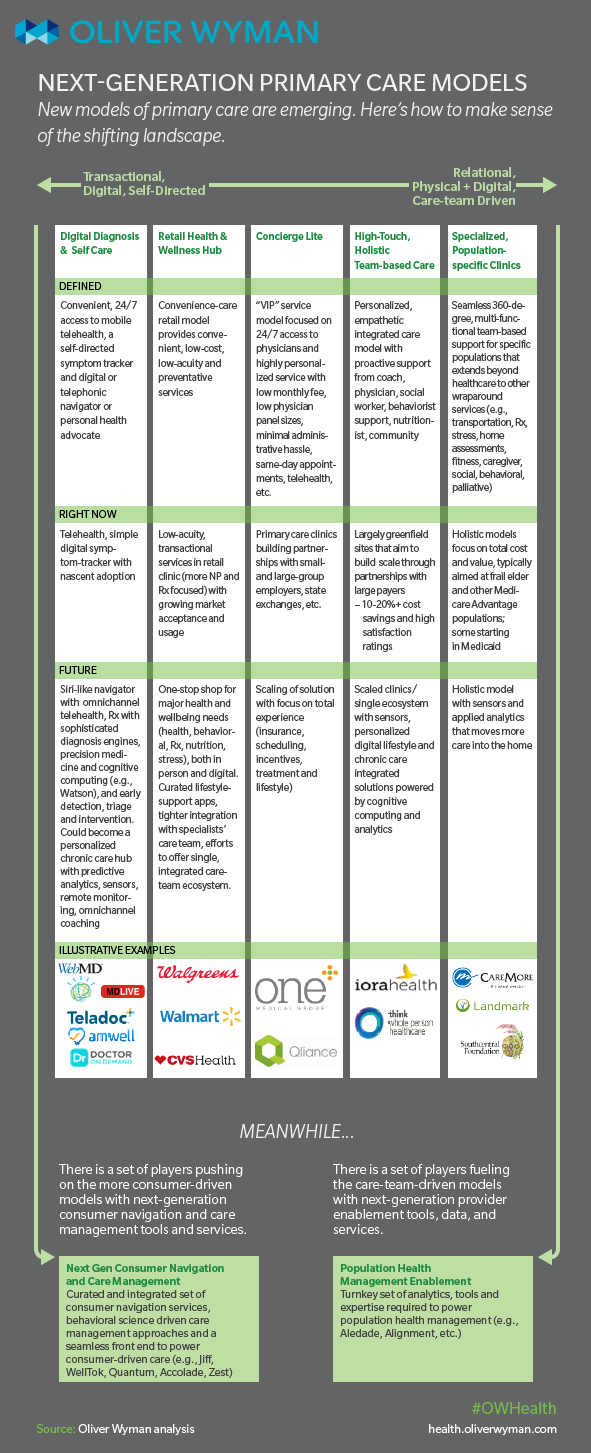Oliver Wyman Partner Sukanya Soderland, who works at the intersection of our healthcare and digital practices, offers perspective on how to navigate the shifting landscape of primary care:
Primary care accounts for just 6 to 8 percent of total healthcare spending, but it directs and drives much of the market’s downstream spend. As such, primary care providers play a pivotal role in the market’s shift toward value-based care and are key to the industry delivering on the promise of appropriate, high-quality, cost-effective care.
It's no surprise then that the primary care setting is the focus of renewed interest, investment, and innovation. A variety of new primary care models are emerging – models that range from more transitional, digital, and self-directed, to more relational, physical, and care-team oriented.
In the new landscape, consumers won’t be limited to just one of these models. Depending on needs and attitudes, a consumer might access different models at different times of life – or even different times of the week. For instance, a mother might visit a retail clinic with a sick child one day, have a telemedicine consult for a migraine the next, and visit a frail-elder hub with an aging parent the next.
The infographic below paints a picture of the emerging new primary care models today and what the future models could look like, with healthier population health segments served by the models on the left, and sicker, more-frail served by those on the right.
We can see how the traditionally monolithic care-delivery model of today may in the future be more specialized to better meet the needs of consumers across ages and stages of life. At the same time, this modularized framework delivers greater value, affordability, and quality of life.


